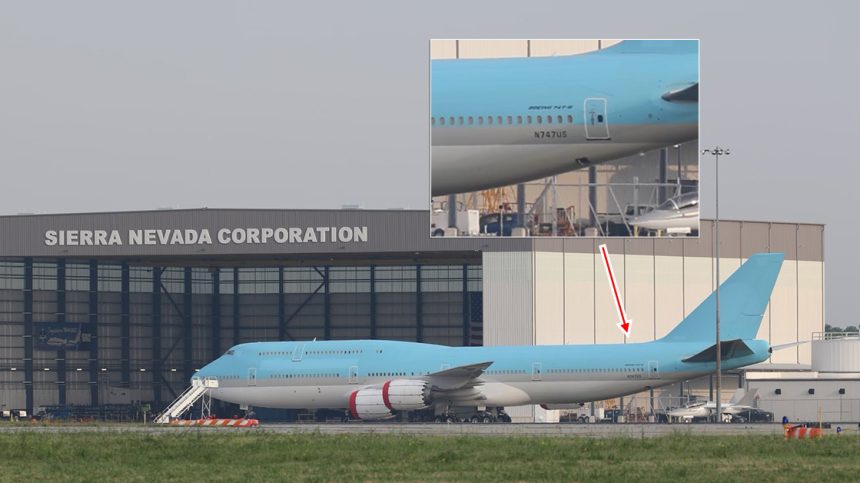The B-747-8, with new registration N747US, was spotted outside Sierra Nevada hangar at Dayton International Airport during the 2024 CenterPoint Energy Dayton Air Show.
Last month, Korean Air disclosed plans to sell five of its Boeing 747-8 aircraft to U.S. aerospace firm Sierra Nevada Corporation (SNC). This deal, valued at 918 billion Korean won (about $674 million), was said to support Korean Air’s strategy to replace older planes with newer models and is expected to be finalized by September 2025.
As we reported, the aircraft were probably purchased by SNC as part of the Survivable Airborne Operations Center (SAOC) program. In fact, Sierra Nevada Corporation recently secured a $13 billion contract from the U.S. Air Force to develop the SOAC which will replace the E-4B Nightwatch, also known as the “Doomsday plane” for its nuclear war and emergency command roles.
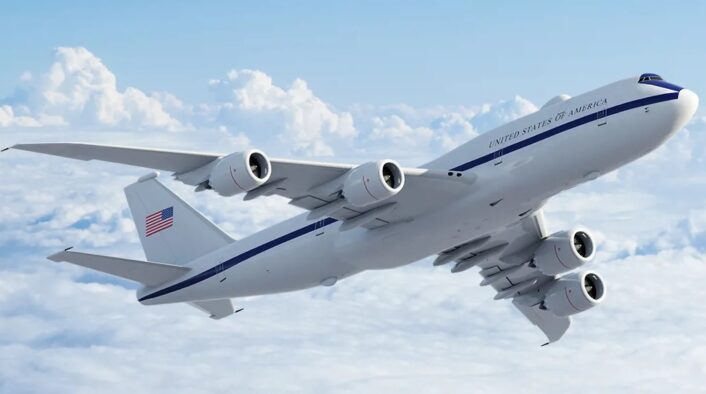
The new SAOC will be a specialized version of a commercial aircraft: while no confirmation were provided when the contract was announced, the most likely candidate for the conversion were second-hand Boeing 747-8, given the requirement for a four-engine plane, and the Boeing 747 production ending last year.
The subsequent sale of the five Korean Air B-747-8 to SNC confirmed the selection of the type for the “Doomsday conversion”.
The first of five ex-Korean Air B-747-8 (HL7630) arrived at Dayton International, Ohio, on Jun. 4, 2024.
The first of 5 ex Korean Air Boeing 747-800 (HL7630) arrived today in Dayton, Ohio that will be modified by the Sierra Nevada Corp to replace the existing E-4B NAOC in to the E-4 Survivable Airborne Operations Center (SAOC) pic.twitter.com/Ha373Mllso
— Thenewarea51 (@thenewarea51) June 4, 2024
Interestingly, the aircraft was spotted again, sitting outside the hangar of SNC at Dayton International on Jun. 22-23, during the 2024 CenterPoint Energy Dayton Air Show.
Our friend and reader Jared Soergel took some interesting photographs of the B-747-8 which, since its arrival in the US, has been stripped of its former markings and given the U.S. registration N747US.
The ex Korean Air Boeing 747-8B5 that is the first to become the new E-4 “Doomsday” plane is undergoing its transformation. The registration is now N747US after previously being registered HL7630 😎#TeamSAOC
Big thanks to @jsoergel949 for sharing from the Dayton Air Show! pic.twitter.com/bnNT3FbPC1
— Thenewarea51 (@thenewarea51) June 23, 2024
The former HL7630 was parked in the apron of the SNC Aviation Innovation and Technology Center (AITC), a large aircraft maintenance, repair and overhaul (MRO) 100,000-square-foot facility; the first constructed in the Dayton region since WWII, “capable of supporting some of the largest aviation projects in the world” according to the company’s website.
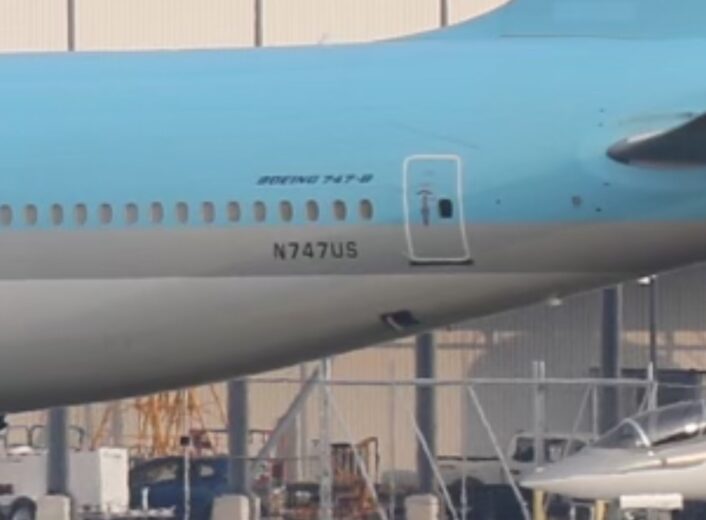
The N747US will be modified extensively: the new “Doomsday” aircraft will be equipped to withstand electronic and nuclear threats, featuring secure communications, self-defense systems, air refueling capabilities, and a modular open systems approach for quick upgrades.
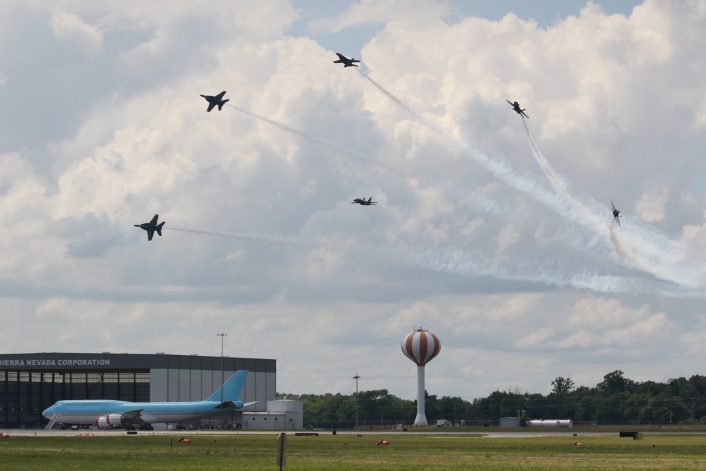
Although the exact number of aircraft has not been disclosed, reports suggest the Air Force may acquire 8 to 10 SAOC aircraft, expected to enter service in 2036: therefore, there will be plenty of B-747-8 at various stages of their modification process at Dayton International in the next years.
The E-4B Nightwatch
The E-4B, a modified Boeing 747-200, is an evolution of the E-4A, which entered service in late 1974. The first E-4B model was delivered to the Air Force in January 1980, and by 1985, all aircraft had been converted to the B model. All E-4B aircraft are operated by the 595th Command and Control Group at Offutt Air Force Base, Nebraska.
The E-4B Nightwatch serves as the National Airborne Operations Center (NAOC), providing command, control, and communications for nuclear and conventional forces.
The E-4B aircraft is essential for transporting the U.S. Secretary of Defense and other high-ranking officials during international trips alongside Air Force One. It is designed to ensure the survival of key decision-makers during nuclear conflicts or other crises. To fulfill this role, it is fortified against electromagnetic pulses (EMPs), featuring resilient analog-style avionics less susceptible to EMPs.
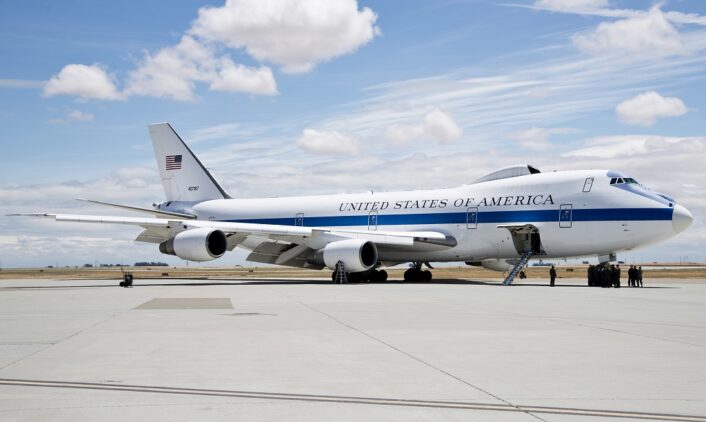
The E-4B’s robust electrical system supports advanced electronics and communications equipment. It has a sophisticated satellite communications system for global connectivity and additional features like nuclear and thermal effect shielding, acoustic control measures, an upgraded technical control facility, and improved air conditioning systems for cooling electrical components.
The main deck of the Nightwatch aircraft is divided into six key areas: command workspace, conference room, briefing area, operations team workspace, communications zone, and rest facilities. An E-4B can accommodate up to 112 personnel, including a joint-service operations team, Air Force flight crew, maintenance and security personnel, communications specialists, and select support staff.
Given the sensitivity of the E-4B, the Air Force rarely shows its interior. However, few weeks ago, Hill AFB’s 2D Audiovisual Squadron released two B-Roll videos showing both the exterior and the interior of the aircraft, with the crew performing their day-to-day activities.
The U.S. Air Force operates four E-4B aircraft, managed by the Air Force Global Strike Command at Offutt Air Force Base in Nebraska. Typically, one aircraft is airborne every 12 hours, with another ready for immediate departure within 5 minutes.

